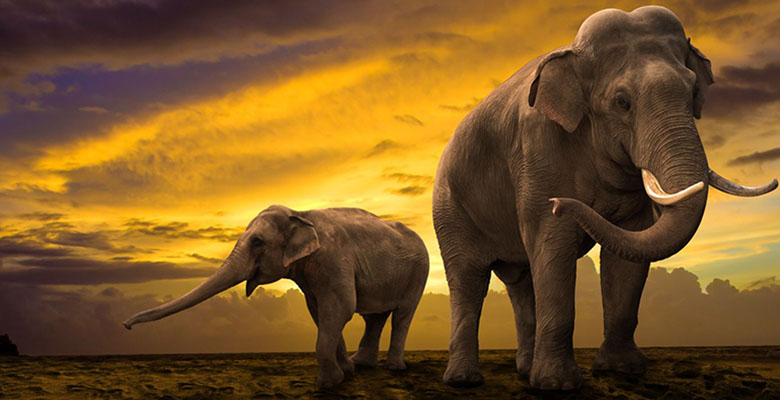Researchers prove herbivore mammals do have bigger bellies

Dr Carlo Meloro from Liverpool John Moores University, with a team of European scientists, has investigated the volumes of body cavities in a large range of extant and fossil tetrapods and found that plant feeding animals have bigger bellies than their carnivore counterparts.
All vertebrate with four legs are tetrapods, and they have evolved a broad diversity of body sizes and shape. From the largest dinosaurs to the tiniest shrew, terrestrial tetrapod species colonised multiple environments and adapted to diets from pure herbivory to fierce carnivory. Such diversity in feeding habits is also supposed to be reflected in the tetrapods' body shapes. As plants are generally less digestible than meat, scientists have generally recognised that herbivores should have bigger bellies, because they require longer and more voluminous guts. However, this had never previously been tested.
Using photogrammetry and computer imaging, Dr Meloro and the team of researchers collated a 3D database of over 120 skeletons including dinosaurs, reptiles, birds, mammals and fossil synapsid (the mammal-like reptiles), and reconstructed the volume of the body cavity as delineated by the vertebral column, the ribcage, and the pelvis. In mammals, herbivores on average have a body cavity twice the volume of similar-sized carnivores, clearly suggesting that herbivores indeed need to harbour larger guts. However, this pattern was not evident in the rest of tetrapod species, particularly not in dinosaurs. This suggests either that it is difficult to reconstruct dinosaur skeletons in a reliable way or that there is a fundamental difference in morphological principles between mammals and other tetrapods.
Dr Meloro commented: “We included in this study a high percentage of fossil species from the earliest amphibian (Eryops) to the largest herbivores (Diplodocus and Mammuthus) and the biggest challenge was to construct a coherent representation of their evolutionary tree. We were all expecting fundamental differences in body cavities between herbivores and carnivores and it was rather surprising to realise that such difference occurs in mammals only.”
The study entitled ‘Reconstruction of body cavity volume in terrestrial tetrapods’ is published in the Journal of Anatomy.


